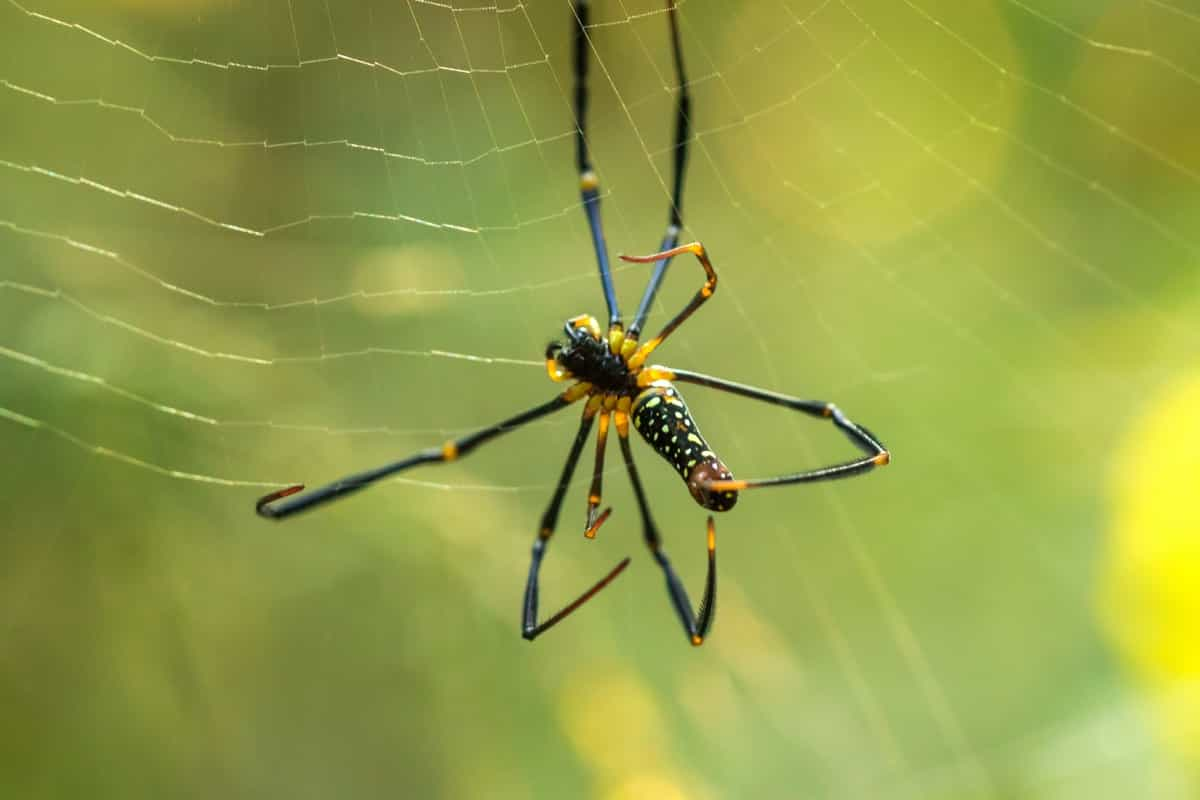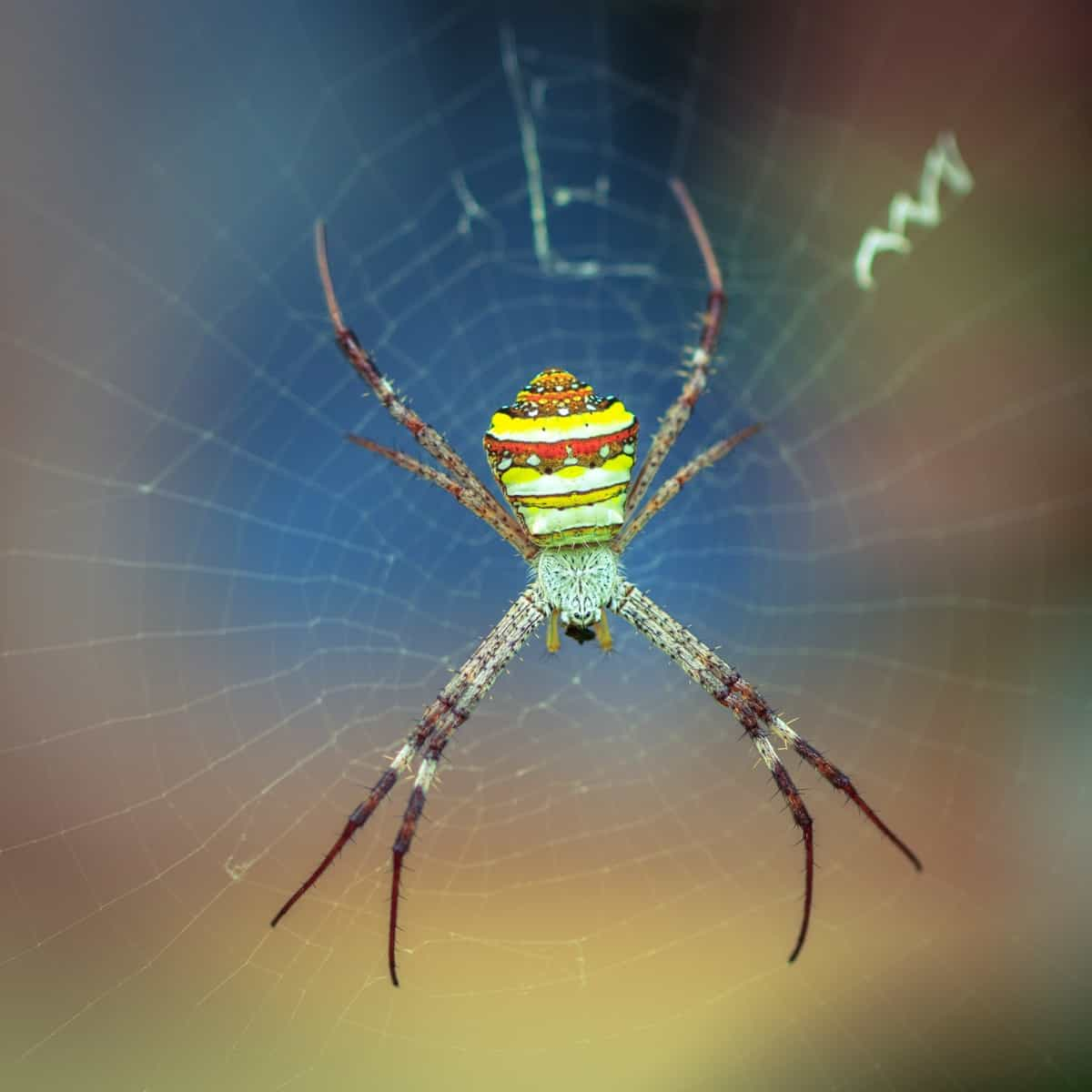The term “Banana Spider” can refer to various species of spiders; one common species is Trichonephila clavipes. These Banana Spiders appear in grocery stores or homes upon opening a box. However, not all Banana Spider species pose a threat to humans. Their presence can have an impact on both humans and their surrounding ecosystems.

Everything You Want to Know About Banana Spiders
Understanding the Basics of Banana Spiders
Banana Spiders are fascinating creatures that have captured the curiosity of many. These spiders are commonly associated with boxes of bananas, hence their name. However, not all Banana Spiders pose a threat to humans. These can be found in a variety of habitats and have a wide distribution across different regions.
They prefer warm climates and can be spotted in trees or other elevated structures. Identifying a Banana Spider is relatively easy once you know what to look for. They typically feature vibrant colors such as yellow and black on their bodies and legs. The females tend to be larger compared to the males and possess distinctive markings on their abdomens.
Habitat and Distribution of Banana Spiders
Banana Spiders can be found in various habitats across the globe. They thrive in warm climates with abundant vegetation. These spiders are commonly found in tropical and subtropical regions worldwide. They prefer warm climates with high humidity levels, such as rainforests or gardens with dense vegetation. In their natural habitat, Banana Spiders typically reside in forests or gardens where they can spin intricate webs between trees or plants.
They prefer areas with a high density of insects for prey capture. However, due to human activities like agriculture and trade, these spiders have been inadvertently introduced to new environments. As a result of accidental transportation through shipping containers carrying bananas or other produce, Banana Spiders have made appearances outside their native ranges. This ability has contributed to their expanded distribution worldwide.
Physical Characteristics and Identification of Banana Spiders
Banana Spiders have some unique physical characteristics that set them apart from other spider species. One notable feature is their size, with females typically measuring around 1-2 inches in length. Their bodies are usually a vibrant yellow or orange color, which helps them within the banana plants they inhabit. These spiders are easily recognizable by their intricate webs made of strong golden silk threads. The webs can reach impressive sizes, spanning up to several feet in diameter.
In case you missed it: How to Get Rid of Spiders in the Home: 10 DIY Homemade Spray Recipes for Controlling Spiders

They also possess distinctive markings on their abdomens, which vary depending on the specific species and individual specimen. When it comes to identifying Banana Spiders, it’s important to note that not all types found near bananas are dangerous. While some species may cause mild discomfort if bitten, others pose no threat to humans at all. If you encounter a spider resembling a Banana Spider but aren’t sure about its identity or potential danger level, it’s best to consult an expert for proper identification.
Behavior and Diet of Banana Spiders
Banana Spiders primarily feed on insects such as flies and beetles. These spiders are highly adaptable and found in different habitats, ranging from tropical rainforests to suburban gardens. Banana Spiders are primarily solitary creatures. They spend most of their time building and maintaining intricate orb-shaped webs that serve as both their homes and hunting grounds.
The diet of Banana Spiders consists mainly of small to medium-sized insects. Once trapped in the web, these spiders use their venomous fangs to immobilize their prey before wrapping them up in silk for later consumption. It’s important to note that while they may occasionally catch larger prey like grasshoppers or moths, their primary food source remains smaller insects. In addition to being skilled hunters, Banana Spiders also exhibit interesting defensive behaviors.
Reproduction and Life Cycle of Banana Spiders
It all begins with the female spider producing an egg sac that can contain hundreds of eggs. The female carefully guards these sacs to ensure their safety. After an incubation period, the eggs hatch, and tiny spiderlings emerge. They disperse from the egg sac using silk threads to float on the wind, which helps them find suitable areas to establish their webs. As they grow, juvenile Banana Spiders molt multiple times, gradually increasing in size. During this period, they continue to disperse to find suitable habitats and construct their first webs.
Once they reach maturity, Banana Spiders enter the adult stage. The females are significantly larger than males and have characteristic golden or yellow bodies with dark leg bands. Adult females build larger orb-shaped webs for reproduction purposes. Once fertilized, a female may produce multiple egg sacs during her lifetime. Each sac contains numerous eggs that she will protect until they hatch into spiderlings. The reproduction of Banana Spiders demonstrates nature’s incredible adaptations for the survival of species.
Venom and Bite of Banana Spiders: Myths vs. Facts
It’s important to note that Banana Spiders are generally not considered dangerous to humans. While they do possess venom, it is typically not harmful to us. Bites from these spiders are rare and usually only result in minor local discomfort or itching. Banana Spider bites do not cause necrotic tissue damage like some other spider species.
The idea that their venom can rot flesh is simply an urban legend. Suppose you happen to get bitten by a Banana Spider and experience severe symptoms such as intense pain, muscle cramps, or difficulty breathing. In that case, it is recommended that medical attention be sought immediately. Although uncommon, allergic reactions can occur in some individuals.
However, it’s important to note that everyone’s response to spider bites can vary. Some individuals may experience more pronounced symptoms than others due to factors such as individual sensitivity or allergic reactions. If you are unfortunate enough to be bitten by a Banana Spider and develop severe symptoms like intense pain, swelling, difficulty breathing, or other concerning signs, seeking medical attention is highly recommended.
Banana Spider Size and Bite Effects on Humans
Banana Spiders are known for their impressive size, with adult females growing up to 4-5 inches in body length. While Banana Spider venom does possess some toxins, they are generally not harmful or dangerous to humans. Bites from these spiders are rare and usually result in only minor local discomfort or itching.
It’s crucial to remember that every individual may react differently to insect or spider bites. Suppose you happen to be bitten by a Banana Spider and experience severe symptoms such as intense pain, swelling, or difficulty breathing. In that case, it is recommended that you seek medical attention immediately. In general, encountering a Banana Spider should not cause panic or fear. These creatures play an essential role in controlling insect populations while also contributing positively to our ecosystem.
In case you missed it: How to Use Neem Oil to Control Spider Mites: How to Get Rid with Natural and Organic Treatment

Interactions with Humans: Are Banana Spiders Poisonous?
It’s important to clarify that Banana Spiders do possess venom. However, before you start panicking, let me assure you that their venom is typically not harmful to humans. Bites from these spiders are quite rare and usually result in minor local discomfort or itching. Of course, everyone’s tolerance for spider encounters may vary. If you happen to be bitten by a Banana Spider and experience severe symptoms such as intense pain or an allergic reaction, it’s advisable to seek medical attention promptly.
Frequently Asked Questions (FAQ) on Banana Spiders
What is the Life Cycle of a Banana Spider?
These arachnids go through a typical spider life cycle consisting of egg laying, hatching into spiderlings, molting several times to grow larger, and eventually reaching maturity.
Where Do Banana Spiders Live?
These adaptable creatures can be found in many habitats, such as forests, gardens, and even urban areas. Their habitat preference often depends on food availability and suitable web-building locations.
What Do Banana Spiders Eat?
They primarily feed on insects like flies and mosquitoes that get caught in their large webs made of strong golden silk threads.
Conclusion
Banana Spiders can be found in warm areas around the world. They tend to prefer lush vegetation, such as forests or gardens, where they can build elaborate webs for hunting prey. Despite these potential concerns, it is crucial to remember that not all Banana Spiders are dangerous to humans. It is essential to educate oneself about the specific species present in your area before jumping to conclusions based on general assumptions.
- Deworming Schedule for Dogs/Puppies: A Beginners Guide
- How to Prevent and Control Parasites in Goats
- Beneficial Insects in Pest Management
- Natural Solutions for Pest Control in Flower Gardens
- Types of Fungicides Used in Agriculture
- Common Issues in the Fruit Development Stage of Pomegranate Farming
- Fruit Development Issues in Papaya: Easy Solutions and Treatment
- Soil-Borne Diseases and How to Protect Your Plants
- Practices to Prevent Disease Spread in the Garden